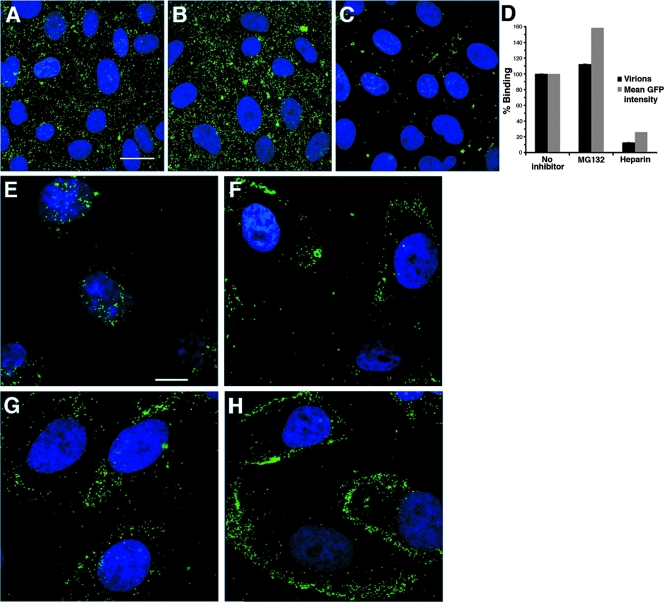FIG. 4.
MG132 affects an entry event that occurs after surface binding, but prior to incoming capsid arrival at the nucleus. (A to D) Effect of MG132 on virus binding to cells. HSV-1 KOS K26GFP (MOI of 30) was added to prechilled Vero cells for 1 h at 4°C in the presence of either no inhibitor (A), 25 μΜ MG132 (B), or 1 μg of heparin/ml (C). Cells were fixed, and confocal images were obtained. Bar, 100 μm. (D) The number of bound GFP-tagged virions was quantified by three observers blinded to experimental conditions (Virions). The data are means with the standard errors. In parallel, mean GFP intensity was measured by the histogram function of Adobe Photoshop. Binding in the absence of inhibitor was set to 100%. (E to H) Effect of proteasome inhibitors on incoming capsid transport to the nuclear periphery. Vero cells were mock treated (E) or treated with 25 μΜ MG132 (F), 10 μΜ lactacystin (G), or 10 μΜ epoxomicin (H) for 15 min at 37°C. HSV-1 KOS K26GFP (MOI of 10) was added for 2.5 h in the constant presence of agent and 0.5 mM cycloheximide. Cells were fixed, and confocal images were obtained. Images are representative of cell population. Bar, 10 μm.

